The damage caused by a burst water pipe can linger long after all the water has dried.
Mould can develop after a plumbing line bursts, impacting both your health and your home’s foundation. In the sections below, we’ll explore why pipes burst and how mould growth occurs.
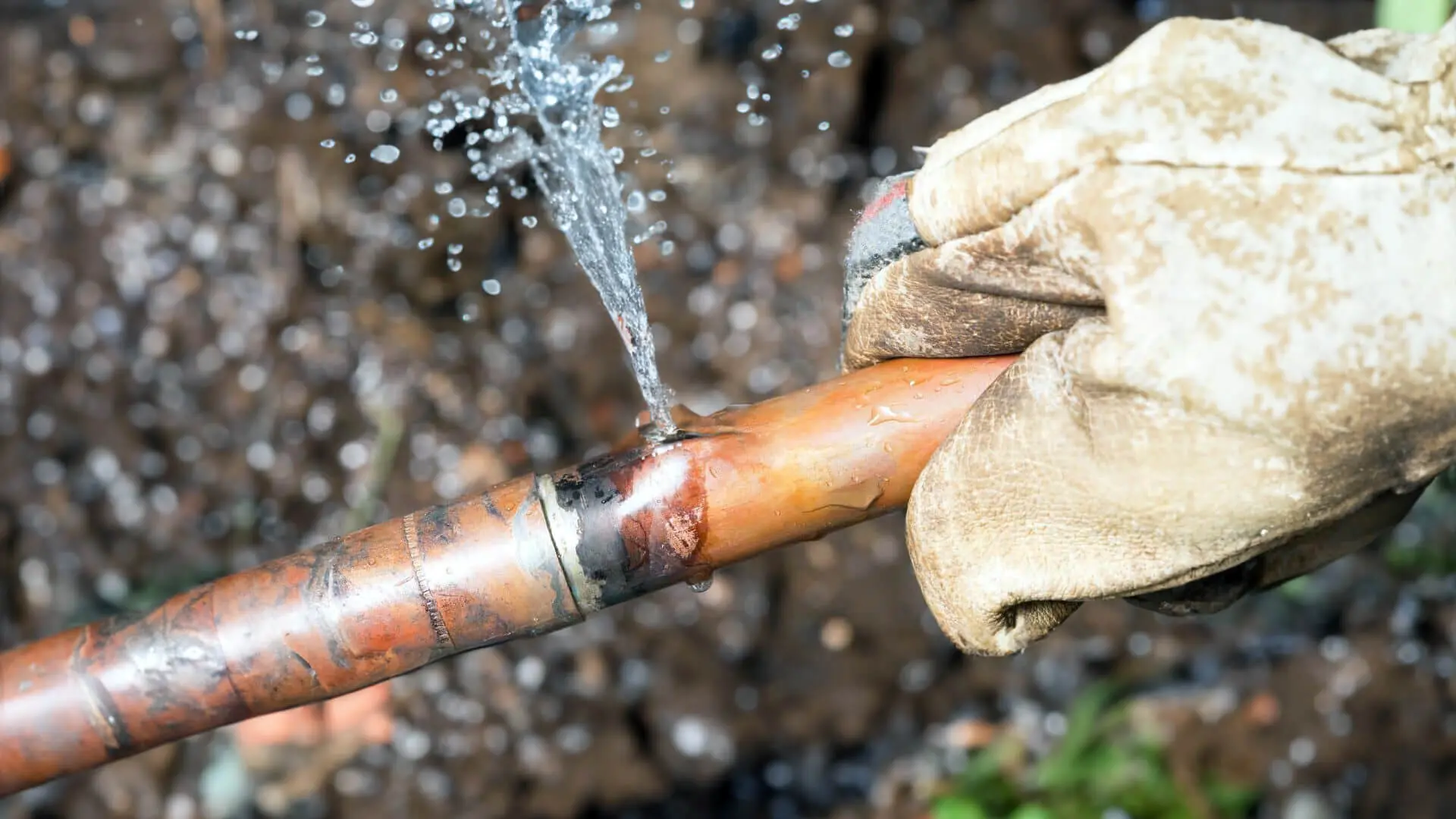
The Risks and Impacts Of Burst Pipes And Mould
A burst pipe can cause severe damage to your home’s structure and foundation, no matter the building materials used. And these damages may occur even if you think you’ve cleared all the water.
Even as you clean the water after a pipe burst, the water can seep into the minor cracks of your walls, drywall and floors, making way for foundational damages. In the case of concrete, the water can settle on the surface, eventually breaking it down from within. Likewise, wooden joists, panels or beams used in your flooring and walls can start rotting when exposed to all that moisture.
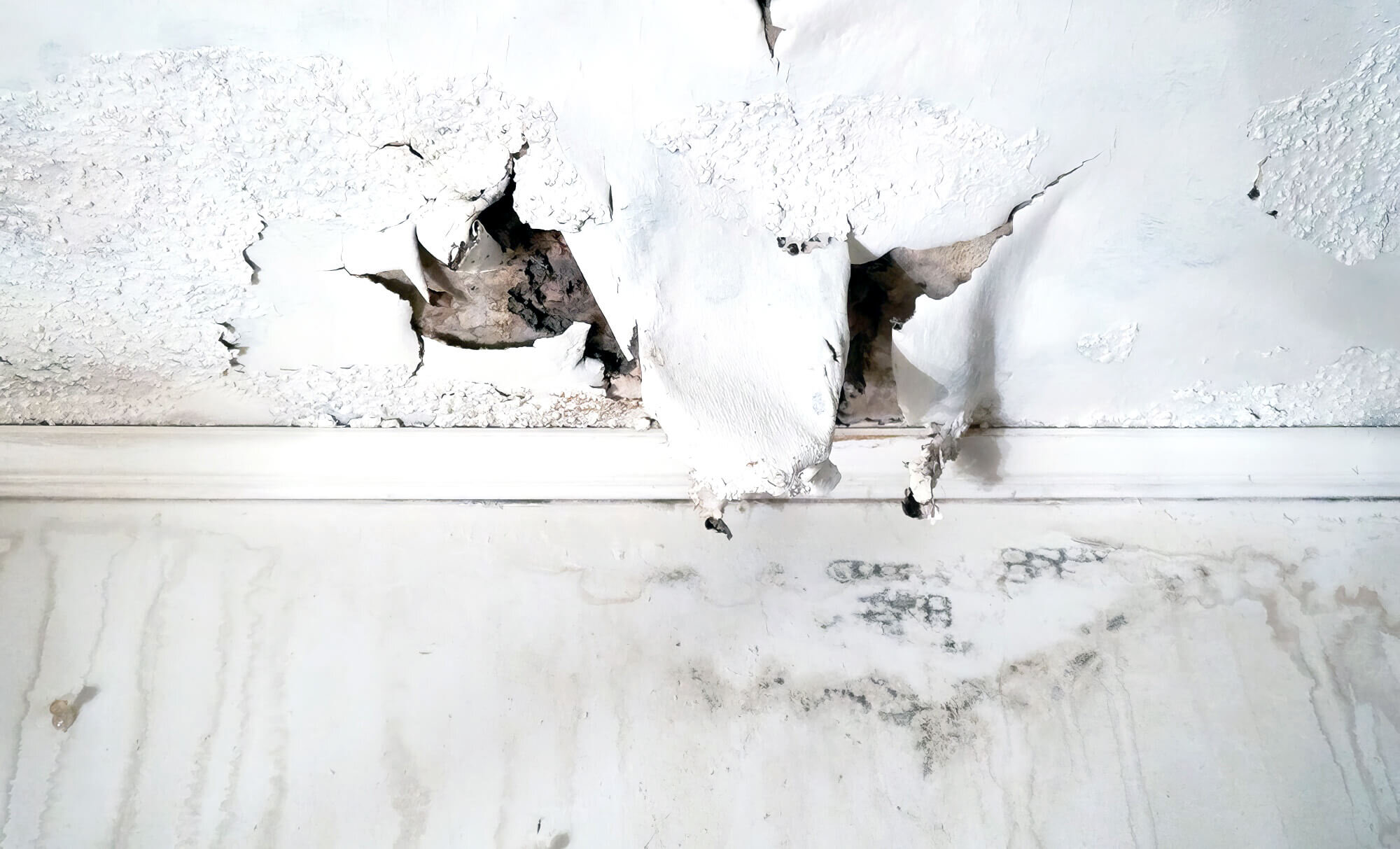
Plus, if a burst pipe causes flooding or thrusts water on the exterior walls of your home, the moisture can damage the siding, stucco and patio, which are crucial to your home’s foundation.
Additionally, burst pipes can lead to dangerous electrical sparks and fires because wiring and fixtures might come into contact with water. If not managed promptly, these electrical hazards can be life-threatening.
As for mould formation, the mould spores can grow quickly and spread in the indoor air, affecting its quality and even causing severe respiratory problems.
What Causes Burst Pipes And How Do They Contribute To Mould Formation?
Your home’s water pipes can burst for various reasons, such as:
1. Blocks Or Clogs
One of the most common reasons behind bursting pipes is blockages or clogs, which put undue pressure on the interior surface of the pipes. As the pressure increases, the pipes eventually break open, causing widespread flooding and other water damage. This is especially true for old and worn-out pipes.
2. Wear And Tear
Sometimes, external damage alone can lead to leaks and eventually cause a pipe to burst. As your pipes age and corrode, water pressure may stress the internal surfaces and joints.
Besides, construction or storage near under-sink pipes can cause accidental damage to the pipes, creating cracks that may intensify with water pressure. And the external pipes can get damaged due to tree intrusions.
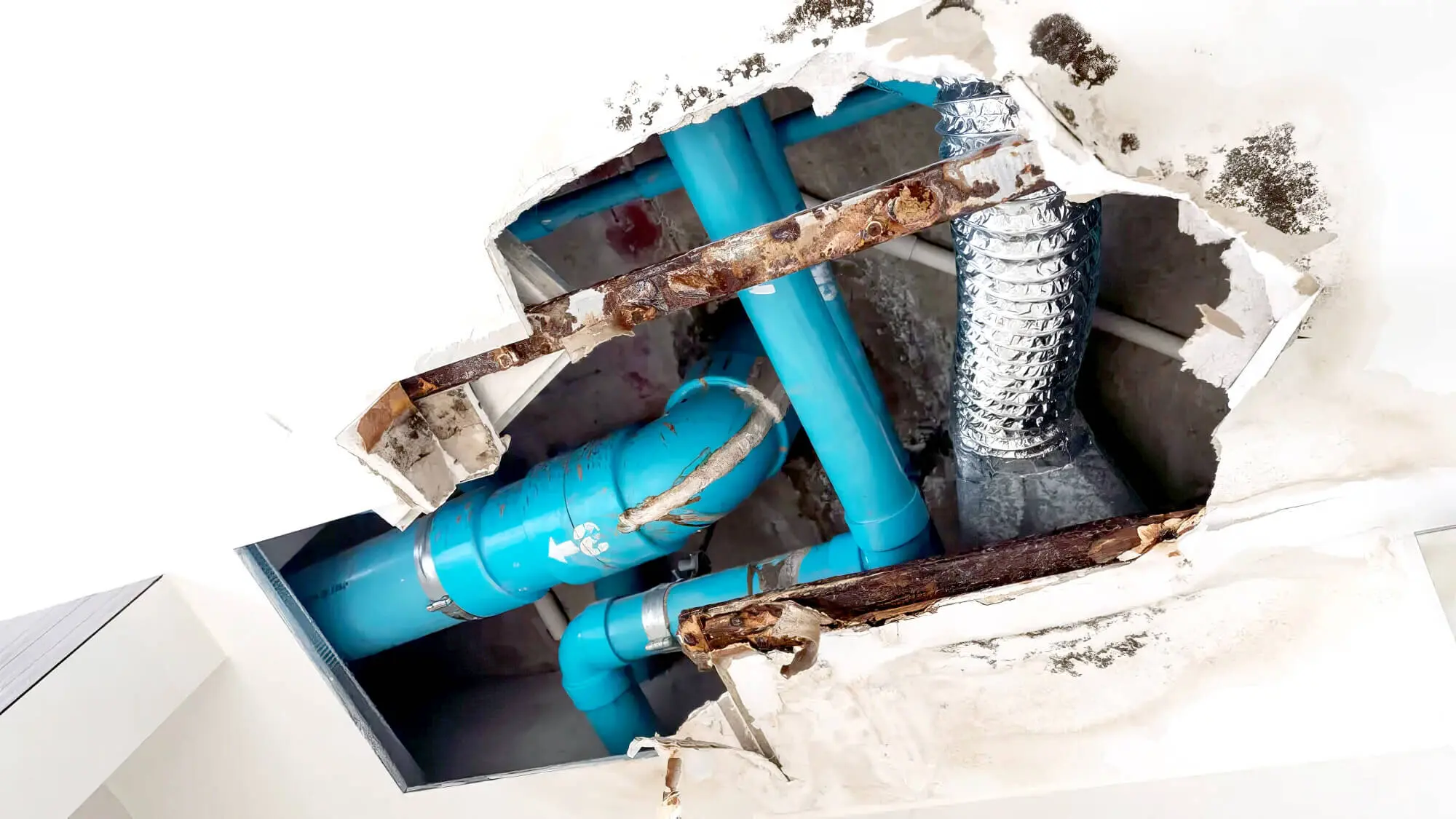
3. Freezing Temperatures
Freezing temperatures in colder regions are among the top reasons for pipe bursts inside and outside a home or building.
When cold water flows inside the pipe, it makes the pipe contract as a way to ‘resist’ the cold temperature. And constant contraction of your plumbing pipes can cause them to burst, especially if they are old or have existing cracks and damage. Further, if the water freezes inside the pipe, it can significantly increase the internal pressure and make the pipe burst.
When pipes freeze, particularly outdoor ones, and then thaw, they undergo a cycle of contraction and expansion. This process can weaken the pipes, leading to leaks or bursts.
4. Faulty Fittings
Faulty fittings from DIY or unlicensed pipe plumbing work can damage pipes and leave faulty joints, making room for leaking pipes or bursts.
How Do Pipe Bursts Cause Mould Growth?
As we’ve already mentioned, a burst pipe incident will invariably cause water to seep through your walls, floors, or ceiling (depending on the burst’s location), creating a damp and humid environment. The longer you leave a flooded area unattended, the more the chances of mould formation will be.
In addition, porous materials like wood, fabric (carpet or rugs) and drywalls will retain more moisture, increasing the risk of mould formation.
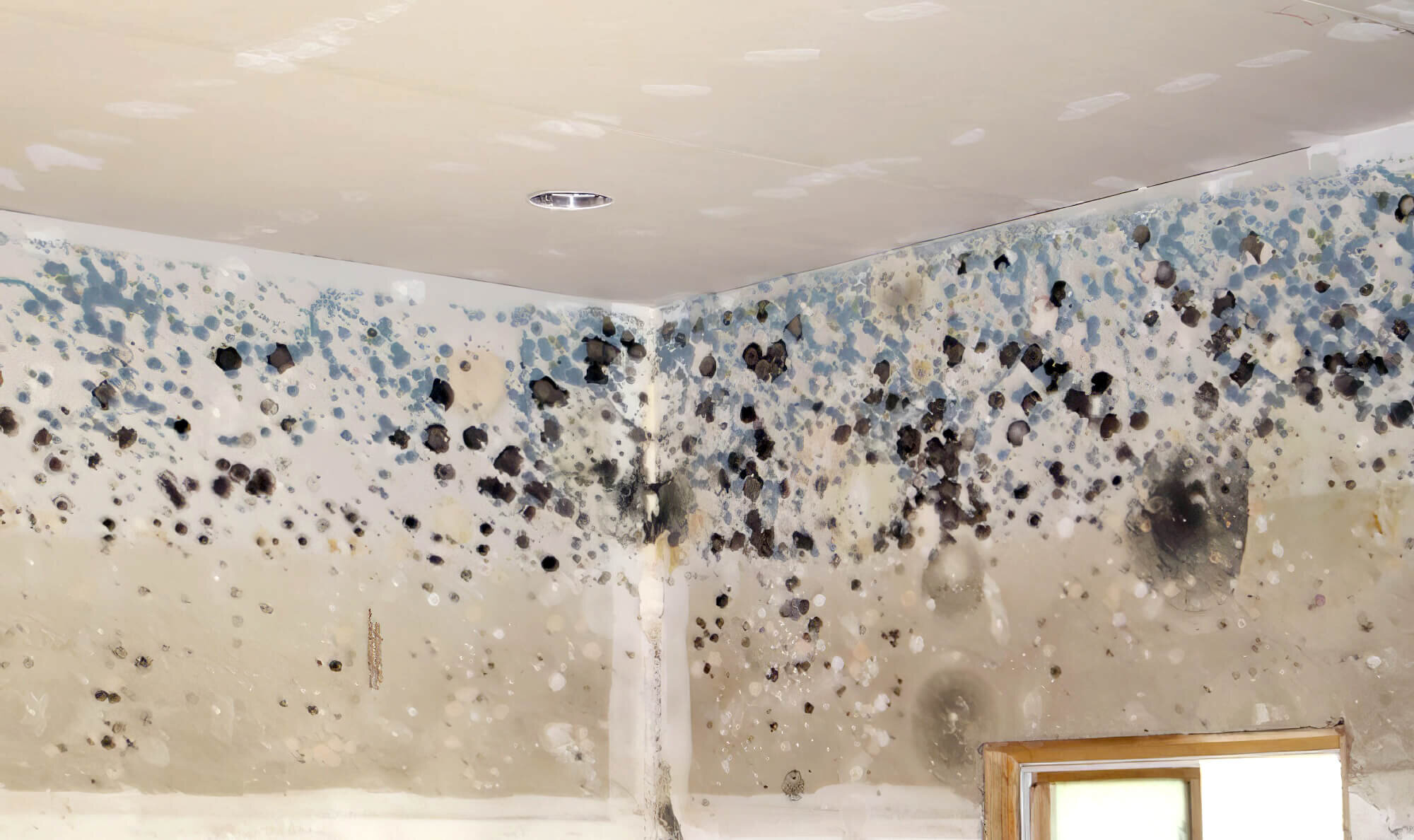
Another factor that promotes mould growth is the absence of light, which makes ‘hidden areas like the attic or crawl spaces extremely prone to developing mould after a pipe burst. Unchecked mould formation can damage the surface on which it grows permanently. For instance, wooden boards and panels can start warping, while drywalls and walls can start peeling or cracking.
Moreover, mould exposure can lead to various health issues, particularly for those with allergies. Possible symptoms include:
- Coughing and sneezing
- Wheezing
- Redness and irritation of eyes
- Headaches
- Rashes on skin
It’s important to remember that people with underlying health conditions may develop severe complications upon being exposed to mould. These may include asthma, obtrusive pulmonary disorder, lung infections and immune suppression. So, they should seek immediate medical attention if they develop any of these symptoms.
Signs Of Mould Growth After A Burst Pipe
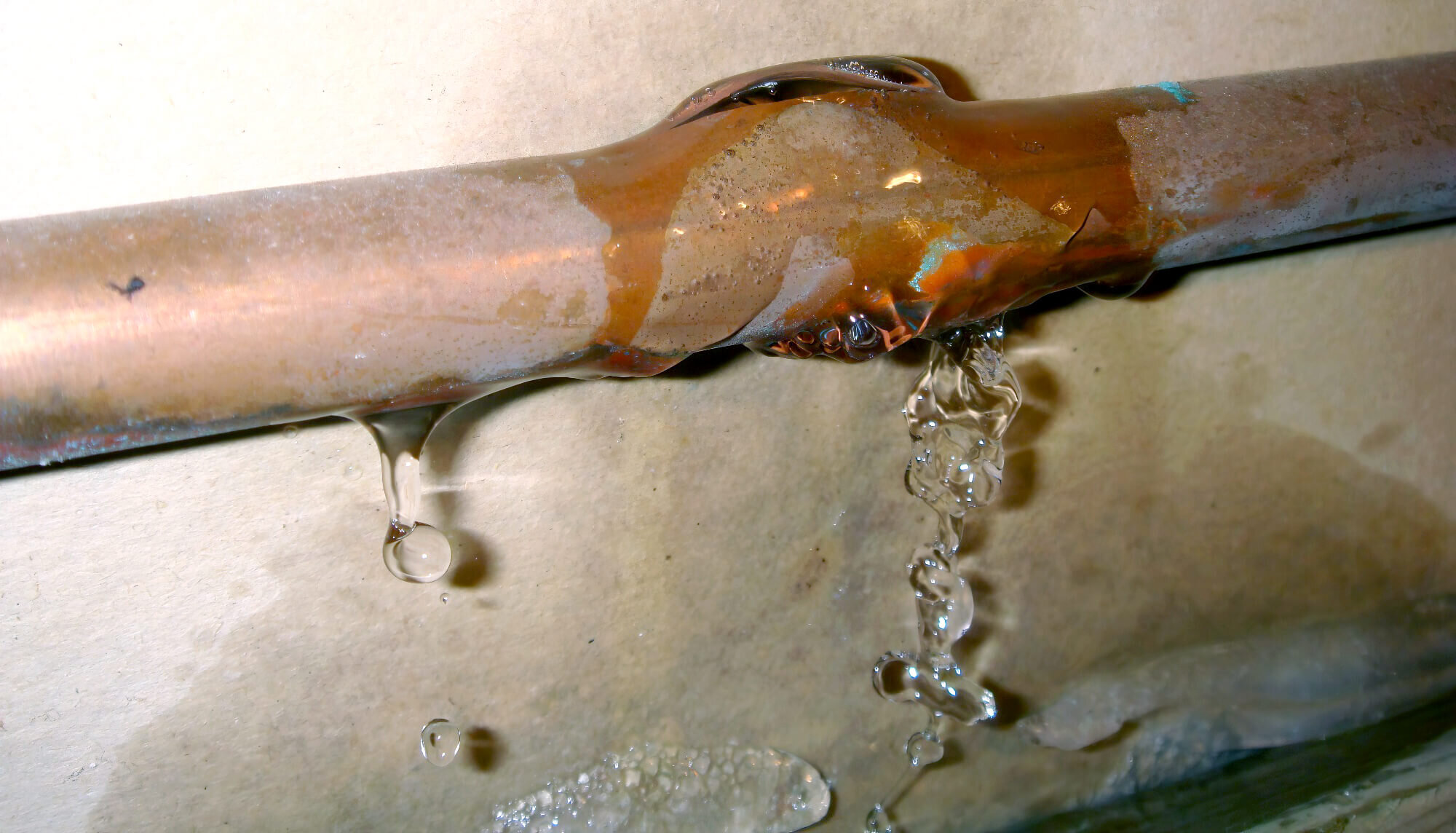
Mould doesn’t appear right after water damage from burst pipes; it takes time for spores to grow. Often, you won’t notice them until they’ve already caused damage.
So, here are some tell-tale signs to be aware of even if the water has been completely dried:
- A musty or earthy smell
- Sudden black, blue, or green growing spots
- Warping or cracking of surfaces after water damage
- Water damage spots that don’t go away
You can also use these signs to identify mould formation from water leaks or burst pipes inside walls or under floors.
How To Deal With Burst Pipes And Mould Formation?

In case of a water pipe burst, the first step is to turn off the faucet or the main water supply to prevent further damage. And ‘flush’ out all the faucets and pipes to remove any water pressure that may cause more flooding.
Next, if your insurance company covers water damage, make a note (and preferably take pictures) of the water damage for an insurance claim. Then, move everything portable from the flooded area to a dry place and remove all the water. Depending on the extent of damage, you may have to part ways with any ruined items like carpets and rugs.
Once the area is completely dry, we’d suggest scrubbing the corners and any visible cracks with a baking soda solution or 3% hydrogen peroxide to reduce the risk of mould growth. Make sure you ventilate the area properly to get rid of any moisture.
Burst Pipes and Mould
There are some DIY steps you can take to reduce the risk of burst pipes. For example, insulate them during winter, prevent clogs, and inspect regularly for damage. It’s also crucial to have plumbing installations handled by professionals to avoid any faults that might lead to bursts.
We’d also suggest availing the emergency services of a professional plumbing service, like Big Blue Plumbing Noosa, in case of a pipe burst. Our trained plumbers have the right tools and expertise to deal with water damage and prevent mould formation.



